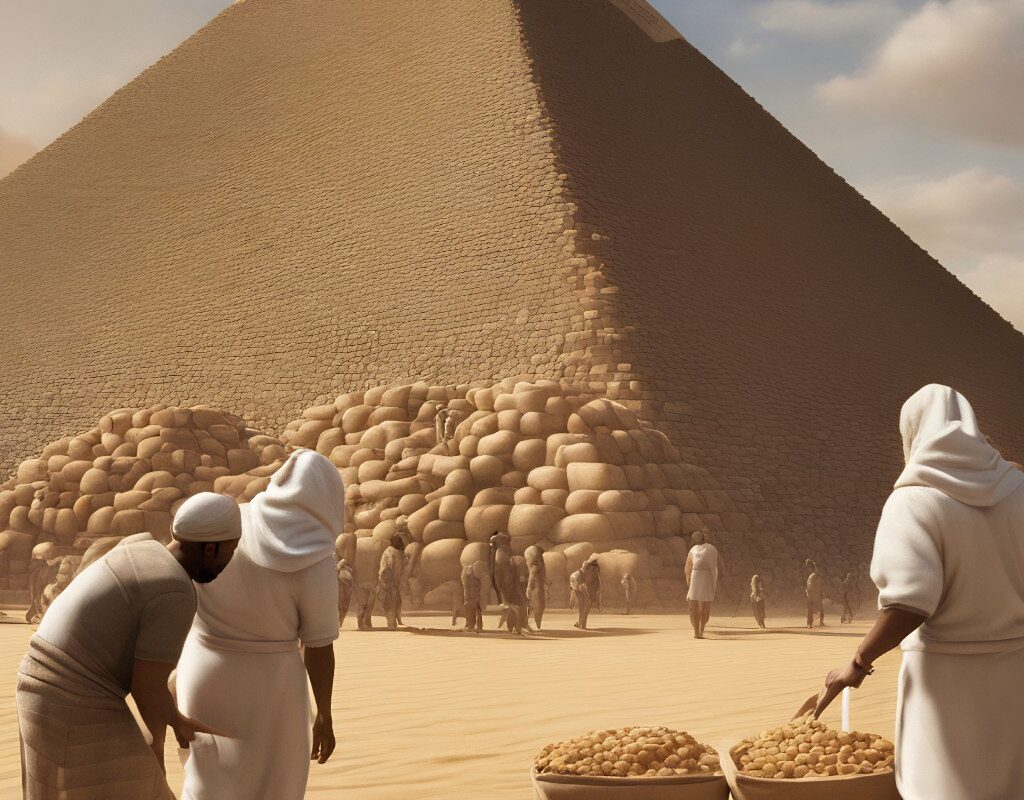The allure of Egypt’s pyramids—monolithic edifices that have stood for millennia, defying both nature and the passage of time—has remained undiminished throughout history. Yet, accompanying this reverence are a plethora of myths and misunderstandings.
Demystifying the Construction of Egypt’s Pyramids: Slavery or Labor Respect?
New Archaeological Findings in Giza: The True Story of the Pyramid Builders
One of the most enduring myths is the notion that these colossal structures were erected by slaves. Archaeological discoveries spearheaded by Egypt’s Supreme Council of Antiquities have shed light on this faulty perception.
Worker tombs, located in the vicinity of the pyramids, particularly those in Giza, have been unearthed, and the data suggest a far more nuanced reality. Zahi Hawass, one of the most preeminent authorities in Egyptian archaeology, argues that these tombs tell a tale of working conditions vastly different from slavery.
These burial sites, dated to be around 4,500 years old, are made of sun-dried mud bricks and are strategically placed near the pyramid, which, experts contend, showcases the high social status of these laborers. The location of the tombs is not the sole indicator dispelling the slavery myth.
Excavations have unearthed evidence concerning the workers’ diet. Apparently, the community of roughly 10,000 individuals received daily rations of 21 cows and 23 sheep. Such an ample protein supply not only underscores the project’s significance but also the respect and importance accorded to the workers.
Additionally, records suggest that men were employed for three-month stints, supporting the theory that many were farmers who worked on the construction during the Nile’s annual floods when their fields were submerged and could not be tilled.
The discovered tombs belong to those who, regrettably, lost their lives during these endeavors.
Pyramids: A Testament to Innovation and Dignity in Ancient Egyptian Civilization
Beyond the Myth: Pyramids as Symbols of Human Ingenuity and Respect in Ancient Egypt
The first tomb of a pyramid worker was unearthed in 1990, and ever since, authorities have been striving to reshape the narrative suggesting that these monuments are the byproducts of suffering and exploitation.
Indeed, the argument posits that such a myth undercuts the exceptional skills of the builders and the sophistication of Egyptian civilization itself.
While it’s certainly true that the construction of the pyramids was a colossal endeavor that unquestionably demanded monumental human effort, the amassed evidence points to a highly specialized and respected workforce.
Far from being a legacy of slavery and misery, the pyramids stand as a testament to the human capacity for innovation, teamwork, and transcendence.
Not only are they the sole remaining wonders among the Seven Wonders of the Ancient World, but they also serve as a monument to human ingenuity and the advanced civilization of ancient Egypt.
The next time we cast our eyes upon these millennia-old structures, let’s remember not only the genius entailed in their construction, but also the respect and dignity accorded to those who made them a reality.

